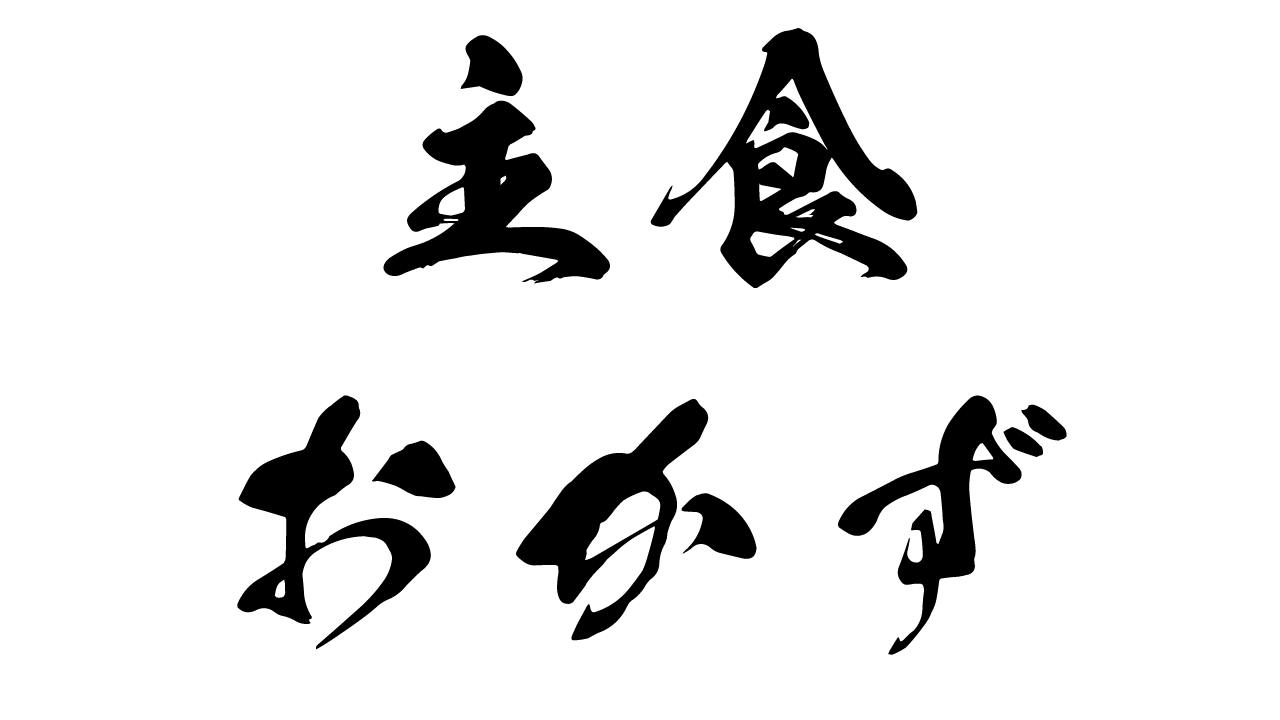The Japanese words, “shushoku” (主食) and “okazu” (おかず), are peculiarly Japanese concepts even though it is not necessarily impossible to translate them into English.
“Shushoku” literally means “main foods” or “primary foods” since “主” means “main” or “primary” and “食” means “foods.” But it doesn’t mean “main dishes.” It actually means almost the opposite of “main dishes” since “shushoku” usually refers to rice in Japan today.
Usually, rice can’t be the main dish unless it is cooked with other materials such as vegetables, meats, and seafood and seasoned properly. For example, paella, biryani, or fried rice could be the main dish. But plain rice can’t be the main dish even though it can be “shushoku.”
If you look at a dictionary, “shushoku” is translated as “staple” or “staple foods.” Staple foods are the foods that supply a dominant amount of energy and essential nutrients such as carbs, proteins, minerals, and vitamins to people from a specific society or culture. People don’t necessarily eat only one kind of staple every day, but people usually have one or a few specific kinds of foods that their everyday meals center on. Among the most popular staples in the world are grains, tubers, roots, or seeds, such as wheat, rice, corn, beans, potatoes, and so on. Most staple foods contain a lot of carbs because carbs can supply the fundamental energy for humans, but meats and fish are also staples for some people.
In the case of the Japanese, rice is their most important staple even though they also eat bread and noodles made of wheat and other foods that I raised above. Thus, “shushoku” usually refers to rice in Japan.
On the other hand, the definition of “okazu” is quite simple. Okazu is something you eat with shushoku. It must go well with shushoku in terms of its taste and nutrition.
Below is a photo of a typical Japanese breakfast even though most people today don’t have enough time to prepare a meal with such many dishes in the morning.

In this photo, the rice at the bottom left is shushoku, and all the rest can be counted as okazu. Precisely speaking, the soup at the bottom right and the pickled vegetables called kōnomono at the top left are often not counted as okazu. But it is not necessarily wrong to count them as okazu if they go well with rice, or shushoku.
In this case, the main dish is the baked salmon at the center rather than the rice. This is why I wrote that “shushoku” means almost the opposite of “main dishes.” Perhaps, plain rice is always a side dish for those who are not familiar with the Japanese lifestyle.
“Okazu” is sometimes translated as “side dishes,” but it is not precise because the salmon is the main dish and an okazu at the same time.
In this shushoku-okazu system, shushoku and okazu are in a master-subordinate relationship. Rice is the master (主), and the raison d’être of all the okazu is to be eaten with rice. The more okazu dishes the meal has, the easier for the cook to balance the nutrition of the whole meal. The meal also becomes more gorgeous if it has many okazu.
There is an interesting derivative usage of the word “okazu.” If one uses materials such as porn videos when he or she masturbates, the materials are called “okazu.” This usage explains very well that okazu is serving a larger purpose, to eat shushoku.
Most Japanese people eat bread or noodles instead of rice in some meals. Even in that case, the idea of shushoku and okazu is persistent in their way of thinking. People always think of shushoku and okazu as a set. If they want to eat bread for a meal, they decide on the main okazu so that it goes well with bread. If they want to cook something that doesn’t go well with rice, they select another shushoku that goes well with the dish. Either shushoku or okazu shouldn’t lack from a meal even though they can be fused into a meal such as the rice dishes that I raised above and noodle dishes such as spaghetti and ramen.
Also, a meal usually has only one kind of shushoku because taking too many carbs is not good for health. For example, if you eat pasta as the main dish, you don’t eat rice in the same meal. Some people eat rice with ramen, but it is probably more precise to say that they are eating rice with the soup rather than the noodles since rice goes well with salty tastes.
In conclusion, the shushoku-okazu system has been functioning as wisdom to eat rice as delicious as possible and to make the whole meal as healthy as possible in Japan. Even if shushoku is not rice, this idea could be useful. By deciding on the menu for every meal using this way of thinking, you can make it easier to constantly cook well-balanced meals every day.
